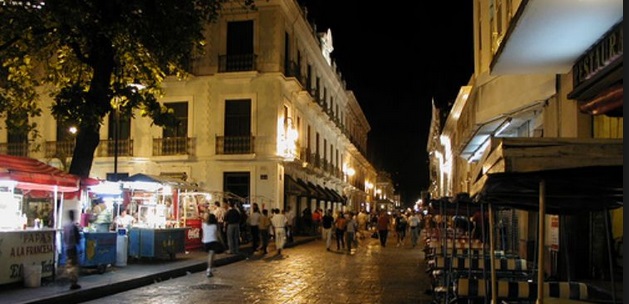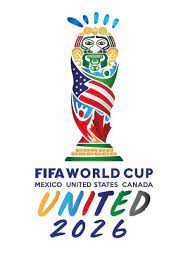Teach English in Merida

History
There were three Spanish conquistadors named “Francisco de Montejo”, “El Adelantado” (father), Francisco de Montejo y León “el Mozo” (son), and Francisco de Montejo “el sobrino” (nephew). Mérida was founded in 1542 by Francisco de Montejo “el Mozo” (son). It was built on the site of the Maya city of T’ho (also known as Ichcaanzihó or “city of the five hills”, referring to five pyramids) which had been a center of Mayan culture and activity for centuries. Because of this, many historians consider Mérida the oldest continually occupied city in the Americas.
Carved Maya stones from ancient T’ho were widely used to build the Spanish colonial buildings that are plentiful in downtown Mérida, and are visible, for instance, in the walls of the main cathedral. Much of Mérida’s architecture from the colonial period through the 18th century and 19th century is still standing in the centro historico of the city. From colonial times through the mid 19th century, Mérida was a walled city intended to protect the Peninsular and Criollo residents from periodic revolts by the indigenous Maya. Several of the old Spanish city gates survive, but modern Mérida has expanded well beyond the old city walls.
Late in the 19th century and the early 20th Century, the area surrounding Mérida prospered from the production of henequén (known as sisal in English, because it was exported from the port of Sisal, which was the most important port in the state during the 19th century. For a brief period, around the turn of the 20th century, Mérida was said to house more millionaires than any other city in the world. The result of this concentration of wealth can still be seen today. Many large and elaborate homes still line the main avenue of Paseo de Montejo, though few are occupied today by individual families. Many of these homes have been restored and now serve as office buildings for banks and insurance companies.
Mérida has one of the largest centro historico districts in the Americas (surpassed only by Mexico City and Havana,Cuba). Large and small colonial homes line the city streets to this day, in various states of disrepair and renovation; the historical center of Mérida is currently undergoing a minor renaissance as more and more people are moving into the old buildings and reviving their former glory.
In August 1993 Pope John Paul II visited the city on his third trip to Mexico. The city has been host to two bilateral United States – Mexico conferences, the first in 1999 (Bill Clinton – Vincente Fox) and the second in 2007 (George W. Bush – Felipe Calderón).
In June 2007, Mérida moved its city museum to the renovated Post Office building next to the downtown market.The Museum of the City of Mérida houses important artifacts from the city’s history, as well as an art gallery.
Mérida is the cultural and financial capital of the Yucatán Peninsula, as well as the capital city of the state of Yucatán. In recent years, two important science competitions were held in Mérida: the 2005 International Mathematical Olympiad and the 2006 International Olympiad in Informatics. In 2006 Mérida hosted the FITA Archery World Cup Final. Mérida also hosted the International Cosmic Ray Conference between 3-11 July 2007. The 40th International Physics Olympiad, IPhO 2009, was held in Merida, Yucatan, Mexico, from July 12 to 19, 2009.
Geography
Mérida is located in the Northwest part of the state of Yucatán, which occupies the northern portion of the Yucatán Peninsula. To the east is the state of Quintana Roo, to the west is the state of Campeche, to the north is the Gulf of Mexico, and far to the south is the state of Chiapas. The city is also located in the Chicxulub Crater. It has a very flat topography and is only 30 feet above sea level. The land outside of Mérida is covered with smaller scrub trees and former henequen fields. Almost no surface water exists, but several cenotes (underground springs and rivers) are found across the state.
Mérida has a centro historico typical of colonial Spanish cities. The street grid is based on odd-numbered streets running east/west and even-numbered streets running north/south, with Calles 60 and 61 bounding the “Plaza Grande” in the heart of the city. The more affluent neighborhoods are located to the north and the most densely populated areas are to the south. The Centro Historico area is becoming increasingly popular with American and other expats who are rescuing and restoring the classic colonial structures. The Los Angeles Times recently noted this surge of interest in rescuing Mérida’s historic downtown.
Weather
Merida features a tropical wet and dry climate. The city lies in the trade wind belt close to the Tropic of Cancer, with the prevailing wind from the east. Mérida’s climate is hot and humidity is moderate to high, depending on the time of year. The average annual high temperature is 91 degrees Fahrenheit (33 degrees Celsius), peaking in May when temperatures can reach 100 degrees Fahrenheit (38 degrees Celsius) in the afternoon. It is most often a few degrees hotter in Mérida than coastal areas due to its inland location and low elevation. The rainy season runs from June through October, associated with the Mexican monsoon which draws warm, moist air landward. Easterly waves and tropical storms also affect the area during this season.
Transportation
Bus
City Service is mostly provided by 4 local transportation companies: Unión de Camioneros de Yucatán (UCY), Alianza de de Camioneros de Yucatán (ACY), Rápidos de Mérida, y Minis 2000. Bus Transportation is at the same level or better than that of bigger cities like Guadalajara or Mexico City. Climate Controlled buses and Micro-Bus (smaller in size) are not uncommon. The Main Bus Terminal (CAME) offers 1st. Class (ADO) and luxury services (UNO) to most southern Mexico cities outside Yucatán with a fleet consisting of Mercedez Benz and Volvo buses. Shorter intrastate routes are serviced by many smaller terminals around the city, mainly in downtown.
TaxisSeveral groups and unions offer Taxi transportation : Frente Único de los Trabajadores del Volante (FUTV) ( white taxis ), Unión de Taxistas Independientes (UTI), Radiotaxímetros de Yucatán, among others. Some of them offer metered service, but most work based on a flat rate depending on destination. Competition has made it of more common use than it was years ago.Taxis can be either found at one of many predefined places around the city (Taxi de Sitio), waved off along the way or called in by radio. Unlike the sophisticated RF counterparts in the US, a Civil Band radio is used and is equally effective. Usually a taxi will respond and arrive within 5 minutes. Another type of Taxi service is called “Colectivo”. Colectivo taxis work like small buses on a predefined route and for a small fare. Usually accommodating 8 to 10 people.
AirMérida is serviced by Manuel Crescencio Rejón International Airport with daily non-stop services to major cities in Mexico (D.F, Monterrey, Villahermosa, Cancún, Guadalajara, Tuxtla Gutierrez, Toluca) and international (Miami, Houston) and usually receiving charter flight services to and from Europe and Canada. Also there is a good amount of freight and cargo planes moving in and out. As of 2006 more than a millon passengers were using this airport every year, (1.3 in 2007) and it is under ASUR administration.
RoadsMain roads in and out of Mérida:Mérida-Progreso (Federal 261), 33 Kilometers long and currently under upgrade to an 8 lane freeway. It joins the city with Yucatán’s biggest port city,Progreso.Mérida-Umán-Campeche (Federal 180), connects with the city of San Francisco de Campeche.Mérida-Kantunil-Cancún (Federal 180), 4 lane road that becomes a Toll road at kantunil. It joins Mérida with Chichén Itzá, Valladolid and ultimately Cancún.Mérida-Tizimín (Federal 176) connects Mérida with Tizimín (2nd. largest city in Yucatán).Mérida-Teabo-Peto known as Mundo Maya Road Carretera del Mundo Maya, its utilized in both “convent route” Ruta de los Conventos, and linking the ancient maya city of Mayapán and Chetumal, state capitol of Quintana Roo
Cost of living
Based on the standard USD exchange value the cost of living in Mérida can be as little as US$690 a month to as much as US$1380. These figures are based on expenditure on housing, food, education, transportation, clothing, recreation, health, furniture, appliances and personal use.
A big feature of living in Mexico is that domestic help is relatively cheap compared to countries in the Western world. In Mérida it’s common to pay around $20 USD to a person (usually a woman) who will come and clean your apartment, iron clothes and if you’re willing to pay a bit extra, cook as well.
For expatriates often the most important starting references upon arriving in a foreign country are expatriate clubs and associations. Some of the most important are the American Society along with the DAR, the International Friendship Club, and Rotary International. American Society acts as a large umbrella organization harboring smaller clubs and associations that are based on particular fields of interest.












